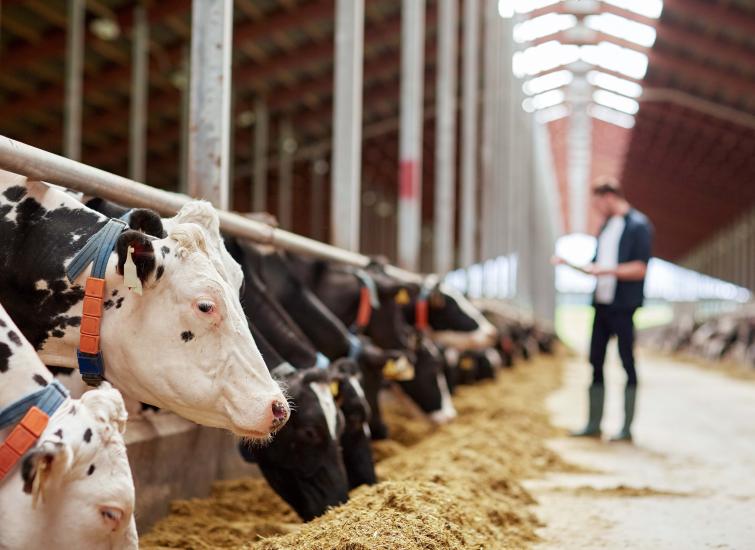We wanted to improve our overall cow health and mobility, so we worked together with Advanced Nutrition. Their Advanced Mobility program helped to give us a true understanding of the lameness and mobility issues we had within the herd.
Efficiency from Conception to Production
Lyn Smith discusses the wide ranging opportunities to improve efficiencies on your farm...

With some supermarkets now pledging that they will only be buying milk and dairy from carbon net zero farms by 2030, now is the time to be considering your dairy business efficiencies and sustainability.
Improving efficiencies on farm can start before an animal is even born. Genomic testing has now given farmers the ability to choose bulls to breed from that can improve feed efficiency. This means that animals can achieve the same amount of growth from eating less feed without compromising any other health or production traits, alongside the positives of this, the more efficient heifers also produce less methane, contributing to environmental benefits. Combine this with excellent colostrum management and making the most of the higher feed conversion rates of calves in the first two months of life, farmers should achieve the target age of first calving of 22 - 24 months. This is one of dairy farming’s key efficiency targets and can have a huge impact on farm profitability and sustainability. Reducing your average age of first calving will also help towards increasing your average lifetime daily yield, this can also be used as a KPI to measure farm efficiency.
The full production potential of each animal on a farm needs to be fully utilised. Lifetime Daily Yield measures the average milk production per day of life from birth to culling, key areas to consider to help maximise this KPI are;
- Age at first Calving
- Managing calving interval
- Increasing the number of lactations per cow
- Increasing yield per lactation
The energy required per cow for maintenance is fixed and is not dependent upon production level. Therefore, if the yield per cow increases, less feed is required per kg of milk produced. So, by increasing lifetime daily yield, the environmental impact of dairy farming is also reduced. The transition period for every cow is an important time and has a huge impact on health and milk production in the subsequent lactation. Careful management through this critical period should be a priority on all farms to maximise production and cow productive lifespan. Achieving a smooth transition without encountering issues such as milk fever (clinical or subclinical), ketosis, metritis or mastitis will also contribute to your farm efficiency and sustainability. Good dry cow management is the key to more lactations. It is important to drive towards as long a productive lifespan as possible, this in turn will reduce farm costs due to the reduced depreciation of each animal on the farm as well as increase lifetime daily yield.
Another key efficiency is knowing the amount of replacement animals required per year, why rear more replacements at a cost to the business than you need? With the UK average herd replacement rate running at between 23-30% (AHDB, 2017/2018) depending on the dairy system, knowing when the time is right to cull cows and trying to maximise the income is also another key efficiency. Keeping the number of involuntary culls on your farm to a minimum is also another factor to consider as this is another cost to the business. It is important to have as many productive animals on your farm as possible at any one time to be able to maximise output.
The factors mentioned above are all key KPIs that if monitored and measured and targets set can help contribute to your farm business profitability, efficiency, and sustainability and therefore help towards improving the environmental impact of dairy farming.
If you would like more information, then please contact a member of the ARN team or call the office on 015242 63139.
〈 BACK



